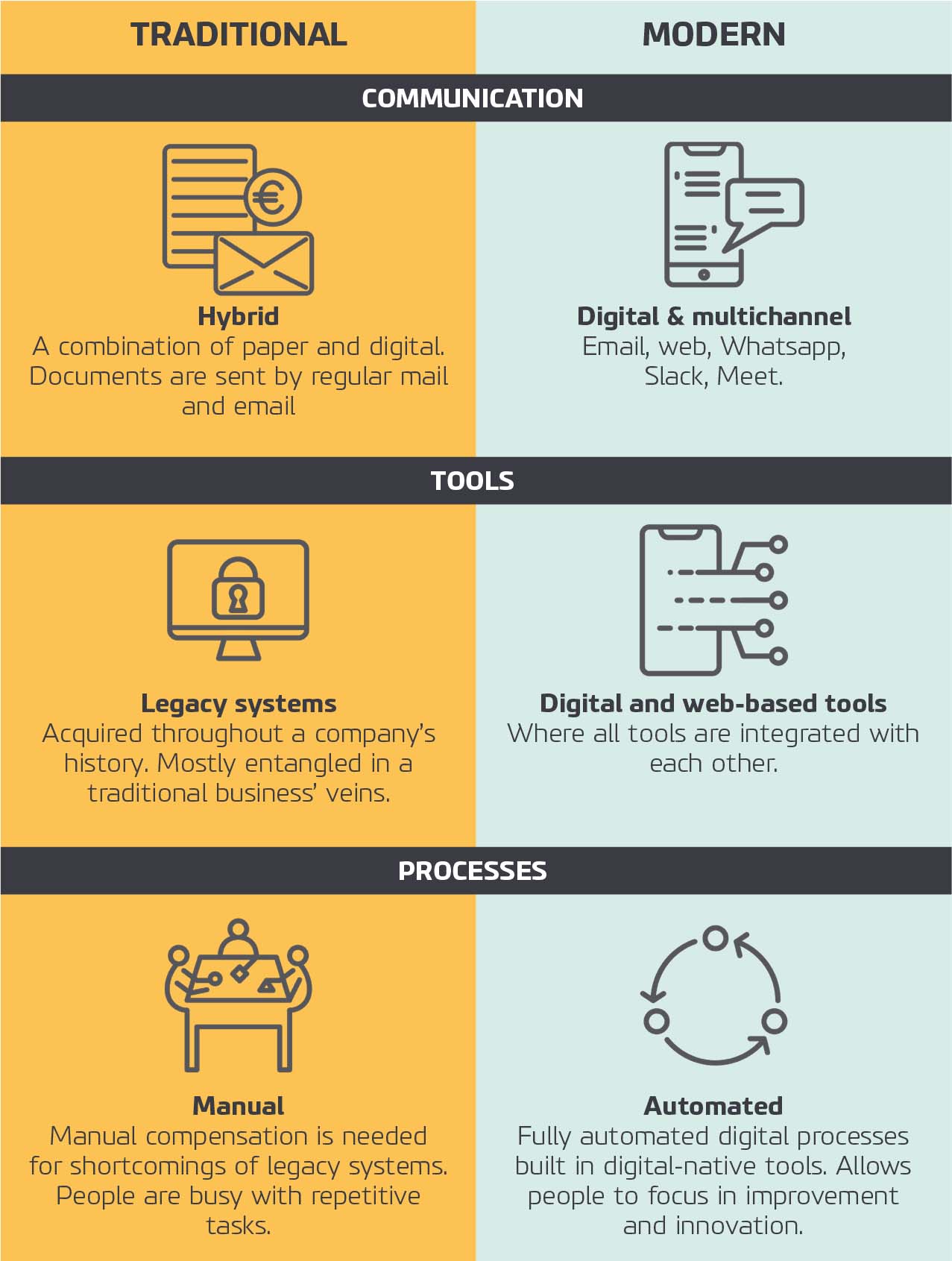Before even considering becoming a digital organization, some necessary changes are needed in the organizational structure. There are many structural variations that organizations can take on, but there are just a few main patterns relevant to be marked as a modern enterprise.
Hierarchy: With hierarchical representation in the organizational structure of traditional organizations, employees are departmentalized and power comes vertically and upward. This makes those organizations fixed and rigid, and unlikely to be successful in innovation and change. Modern organizations have a boundaryless organizational structure that builds more effective teams, networks, and of collaboration. Its main concept is to diversify activities where challenges are accepted more easily.
Stability: Modern organizations are more dynamic with multiple business strategies. Believing that traditional organizations are stable this might be true, and since their activities are planned upfront it does not allow for progress and change, meaning these strategies can become outdated
Flexibility: Unlike traditional organizations which are fixed, inflexible, and planned, modern organizations are more flexible for change in every aspect of their work environment: from knowledge and skills to approaches and workflows.
Risk management: Traditional organizations maintain specific policies and standards in order to mitigate any kind of risk. They are risk averse, unlike modern enterprises which are risk takers with well-defined calculations which assess risks from multiple dimensions. This is not only applied to a given issue at a certain point in time that has already occurred, instead, but they also look at the possibility of potential risk.
: Traditional organizations are centralized and (too) careful to accept advanced methodology and technology. With this rapid pace of technological innovation, the chances to survive with ever-changing market demands are much harder, maybe even impossible. Going modern means switching to a contemporary mindset, focused on what happens now. Companies that do not accept technological modernization and new ways of working will be anchored in the past.
To keep up with these dynamic market demands, organizations need to transform their business by introducing new products and services with digital signatures and augmenting their existing portfolio to fit in the digital ecosystem.
Typical differences

